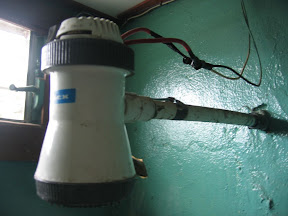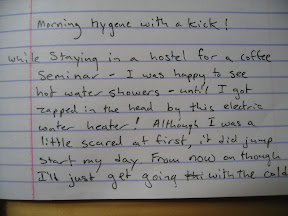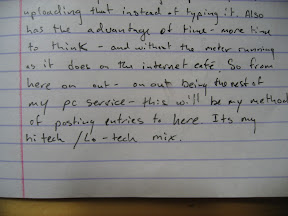
A week earlier I dropped off plans from my boss. My neighbor said he would get the materials ready and we would build it together. When I arrived on the day we had planned to build the depulper, it was almost done.
One of my goals is to figure out what the minimum amount of capital or resources a farmer would need to produce high quality coffee and thereby increase his or her income. This depulper usually costs a couple hundred dollars, but Hermonigo , pictured above, is figuring out how to do it for about $40. Depulpers are necessary as the only way to process coffee without damaging the it is to depulp by hand, which is very time consuming.
In addition to making me happy, the wooden depulper made me think of an article I read before coming to the Peace Corps.
A couple of years ago wired magi zine wrote an article about a rich guy who had started buying MiG fighter jets from the former soviet union. He then outsourced planes flown by hired pilots to the Navy for their pilots to practice and train against. One quotation has helped me think about my work here:
"Kirlin owes his operation to the collapse of the Soviet Union and the elegant crudeness of its technology. "When the Soviets built an airplane, they intended it to serve for 50 years, maintained in the middle of nowhere by a kid who could barely read, using a tool kit not much bigger than a box of fishing tackle." By comparison, he explains, a US warplane is designed around one parameter - performance. Price and complexity are barely considered. "All Americans want is a thoroughbred, but the Russians, they want quarter horses. And lots of 'em. Their whole design philosophy is based on simplicity and reliability."
Builing your own airforce, one mig at a time
I´ve found that this idea of elegant crudeness has helped me to design projects and think through problems, along with the idea of simplicity and reliability.
Likewise, many of the commercial farmers that we learn from are not under the same financial constraints as the farmers i work with who are in extreme poverty. The speciality coffee industry is more like the United States during the cold war, with the pursuit of quality at nearly any costs, as those costs in the market are almost always recouped. I live in a place that is much closer to soviet Russia, better yet Siberian Soviet Russia, in terms of available resources. In order to produce quality coffee we have to get more resourceful and creative under more constraints.





